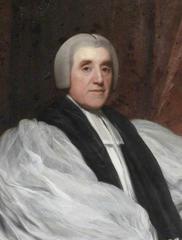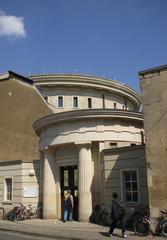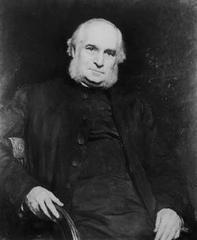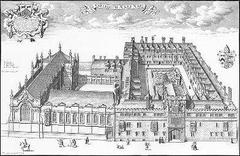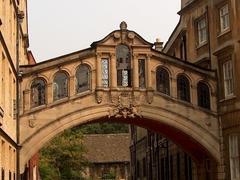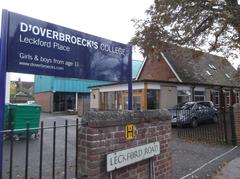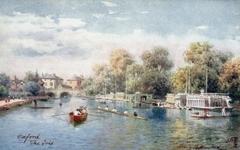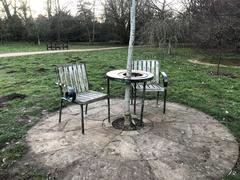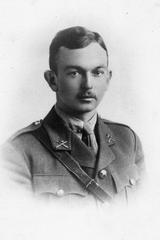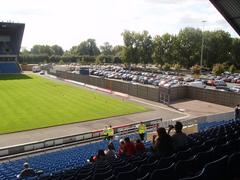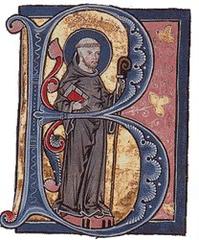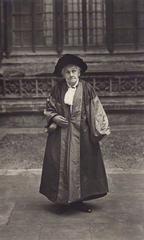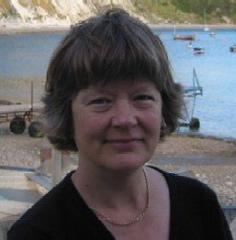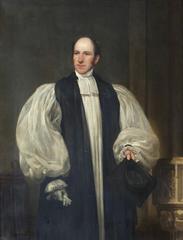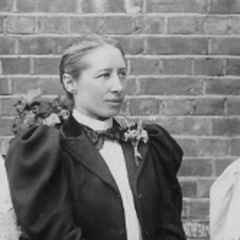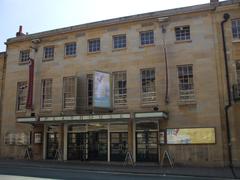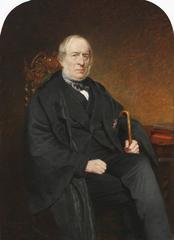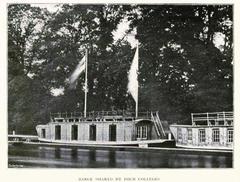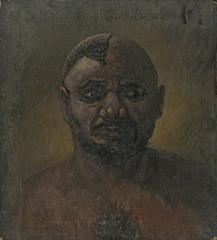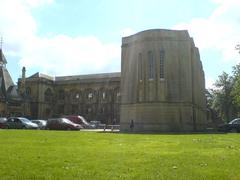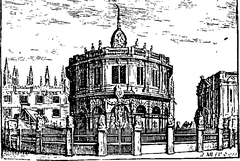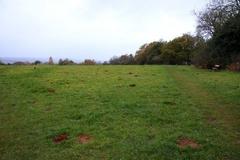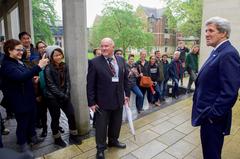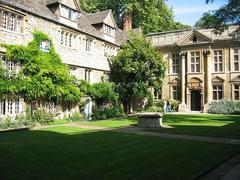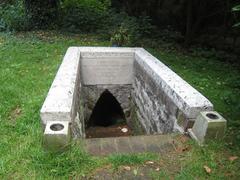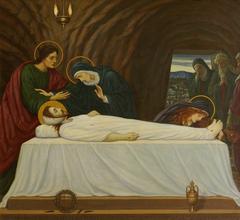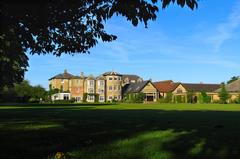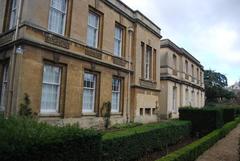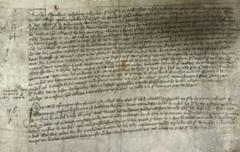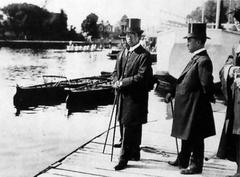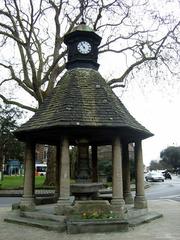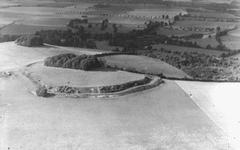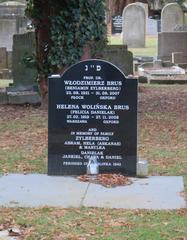Complete Guide to Visiting North Leigh Roman Villa in Oxford
Publication Date: 25/07/2024
Introduction to North Leigh Roman Villa
Nestled in the serene Evenlode Valley of Oxfordshire, the North Leigh Roman Villa stands as a testament to the grandeur and sophistication of Roman Britain. This archaeological marvel, dating back to the 1st century AD, offers a rare glimpse into the luxurious lifestyles of the Roman elite and their architectural ingenuity. Discovered in 1813 by architect Henry Hakewill, the villa was initially excavated to reveal an extensive complex featuring 60 rooms, three bath suites, and 16 intricately decorated mosaic floors (BBC News). The villa’s rediscovery was further enriched by the unearthing of Hakewill’s guidebook in the archives of Blenheim Palace, providing invaluable insights into the villa’s original decoration and layout (BBC News). Managed by English Heritage, the North Leigh Roman Villa is a significant cultural and educational resource, drawing tourists, history enthusiasts, and scholars alike to explore its well-preserved remains and understand the broader Roman influence on British society (English Heritage). This comprehensive guide will delve into the villa’s rich history, architectural features, and practical visitor information to help you plan an unforgettable visit.
Contents Overview
- Introduction
- History of North Leigh Roman Villa
- Discovery and Initial Excavation
- The Rediscovery of Hakewill’s Guide
- Architectural Features
- Design and Layout
- Mosaics and Decorations
- Historical Significance
- Visitor Information
- Tickets and Opening Hours
- Travel Tips
- Nearby Attractions
- Accessibility
- Preservation and Public Interest
- Challenges in Preservation
- Educational and Cultural Impact
- Future Prospects
- FAQ Section
- Conclusion
History of North Leigh Roman Villa
Discovery and Initial Excavation
The North Leigh Roman Villa was first excavated in 1813 by architect Henry Hakewill. During this initial excavation, Hakewill uncovered the extensive remains of a luxurious Roman villa that once boasted 60 rooms. The villa included three bath suites, 16 rooms adorned with intricate mosaics, and 11 rooms equipped with under-floor heating systems, known as hypocausts (BBC News).
The Rediscovery of Hakewill’s Guide
A pivotal moment in the villa’s history came with the rediscovery of a 200-year-old guidebook written by Hakewill himself. This fragile document was found in the archives of Blenheim Palace by Dr. Alexa Frost, an archivist. The guidebook, which once belonged to the Duke of Marlborough, provides detailed descriptions and drawings of the villa’s original decoration and layout. It includes information on the colors, patterns, and designs of the walls, floors, and ceilings, many of which have been lost over the past two centuries (BBC News).
Architectural Features
Design and Layout
The North Leigh Roman Villa was a testament to Roman architectural ingenuity and luxury. The villa’s layout was designed to maximize comfort and utility. The presence of three bath suites indicates the importance of bathing in Roman culture, not just for hygiene but also as a social activity. The hypocaust system, an early form of central heating, highlights the advanced engineering skills of the Romans. This system involved heating air beneath the floors, which then circulated through flues in the walls, providing warmth throughout the rooms (BBC News).
Mosaics and Decorations
One of the most striking features of the villa was its extensive use of mosaics. Sixteen rooms were decorated with intricate mosaic floors, showcasing a variety of geometric patterns and possibly even scenes from Roman mythology. Unfortunately, much of this mosaic work was pilfered by locals shortly after the villa’s initial discovery. Hakewill’s guidebook, however, includes detailed drawings of these mosaics, offering a valuable resource for historians and archaeologists to understand the villa’s original splendor (BBC News).
Historical Significance
The North Leigh Roman Villa is not just an architectural marvel but also a significant historical site that provides insights into the lives of the Roman elite in Britain. The villa’s size and luxurious features suggest it was owned by a wealthy and influential individual, possibly involved in local governance or trade. The presence of multiple bath suites and extensive mosaics indicates a lifestyle of considerable comfort and sophistication, reflecting the broader Roman influence on British society during this period (BBC News).
Visitor Information
Tickets and Opening Hours
To visit the North Leigh Roman Villa, you can check the latest ticket prices and visiting hours on the official website or contact the local tourism office. Typically, the villa is open to the public during the warmer months, but it’s always wise to verify current opening hours before planning your visit.
Travel Tips
The villa is located in Oxfordshire, easily accessible by car or public transport. If you’re traveling by train, the closest station is Hanborough, from which you can take a taxi or bus to the site. Ample parking is available for those driving. We recommend wearing comfortable walking shoes as the site involves some walking on uneven terrain.
Nearby Attractions
While visiting the North Leigh Roman Villa, consider exploring other historical sites in Oxfordshire, such as Blenheim Palace, the Uffington White Horse, and the Oxford University Museum of Natural History. These attractions offer a broader understanding of the region’s rich heritage.
Accessibility
Efforts have been made to make the North Leigh Roman Villa accessible to all visitors. However, due to the nature of the archaeological site, some areas may present challenges for those with mobility issues. It’s advisable to contact the site in advance to discuss any specific accessibility needs.
Preservation and Public Interest
Challenges in Preservation
Preserving the North Leigh Roman Villa has been a challenging task. The initial excavation in 1813 led to significant damage, as eager locals flocked to the site and pilfered much of the mosaic flooring. Over the years, natural elements and human activities have further eroded the site. The rediscovery of Hakewill’s guidebook offers a renewed opportunity to document and preserve what remains of this historical treasure. Efforts are now focused on using the guidebook to restore and protect the villa’s remaining features (BBC News).
Educational and Cultural Impact
The North Leigh Roman Villa serves as an important educational resource, offering insights into Roman engineering, architecture, and daily life. Schools and universities often use the site for educational trips, allowing students to explore Roman history in a tangible way. The villa also attracts tourists and history enthusiasts, contributing to the local economy and fostering a deeper appreciation for Britain’s rich historical heritage (BBC News).
Future Prospects
Looking ahead, the future of the North Leigh Roman Villa appears promising. The renewed interest sparked by the rediscovery of Hakewill’s guidebook has led to increased efforts in preservation and public engagement. Plans are underway to create more detailed reconstructions of the villa’s original appearance, using the guidebook as a primary reference. These efforts aim to enhance the visitor experience and ensure that this historical site remains a valuable educational and cultural resource for generations to come (BBC News).
FAQ Section
Q: What are the visiting hours for North Leigh Roman Villa? A: Visiting hours vary by season. It’s best to check the official website or contact the local tourism office for the most up-to-date information.
Q: How much are the tickets to visit the North Leigh Roman Villa? A: Ticket prices can vary. Check the official website for the latest pricing information.
Q: Is the North Leigh Roman Villa accessible to visitors with disabilities? A: While efforts have been made to improve accessibility, some areas of the site may be challenging for visitors with mobility issues. It’s advisable to contact the site in advance to discuss specific needs.
Conclusion
In summary, the North Leigh Roman Villa stands as a remarkable testament to Roman Britain’s architectural and cultural achievements. The rediscovery of Hakewill’s guidebook has provided a wealth of information that will aid in the preservation and interpretation of this significant historical site. As efforts continue to protect and promote the villa, it remains a vital link to understanding the rich tapestry of Britain’s ancient past. Plan your visit today to experience this extraordinary piece of history firsthand.
Sources and Further Reading
- BBC News, 2021, BBC
- English Heritage, English Heritage
- History Hit, History Hit
- Wikipedia, Wikipedia
- Cotswolds, Cotswolds
- Wychwoods History, Wychwoods History
